By Emma JonesFeatures correspondent

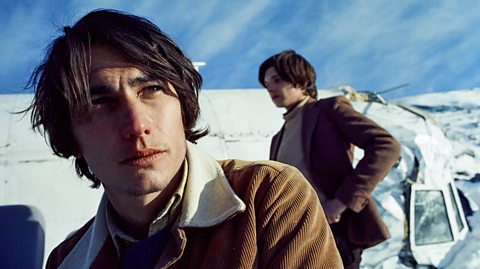 Netflix
NetflixNew Spanish-language film Society of the Snow is based on the horrific events of a Uruguayan plane crash in 1972. Its sensitive take on the tragedy has it tipped for Oscars success.
The synopsis is more sensational than most fictional disaster movie scripts. A plane crashes in a remote part of the Andes in October 1972, and a group of young men, all friends, survive for 72 days in the snow with no means of finding food. They're finally discovered after two of them trek for days with no specialist equipment or clothes to get help, sparking an international media frenzy back home in Uruguay.
The true story has one other horrifying detail – the starving passengers of Uruguayan Air Force Flight 571 were only able to stay alive by eating the bodies of those who did not survive.
More like this:
- Poor Things cast on its 'raunchy' sex scenes
The events of what became known as "The Miracle of the Andes" have been retold since on screen through documentary and once by Hollywood – 1993's Alive by Frank Marshall, starring Ethan Hawke. The events also inspired the Emmy-nominated, female-led series Yellowjackets in which a group of teenagers in a plane crash face the same kind of choices as the survivors of Flight 571, and the trauma it gives them years later.

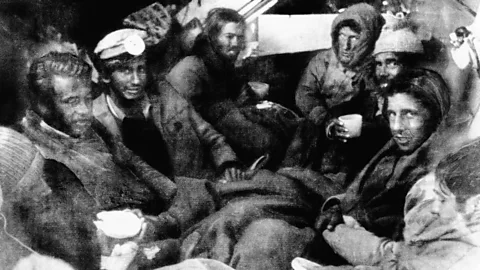 Alamy
AlamyNow a Spanish-language feature film about the events, Society of the Snow, has been made by The Impossible director, Spain's JA Bayona. It's inspired by the 2008 book of the same name by Pablo Vierci, a journalist and friend of the survivors, who is also an associate producer of the film.
Bayona, who's been working on making the film since 2011, conducted extensive interviews with the survivors, and one of them, Carlitos Páez, plays his own father in the movie. Most of the acting cast are from Argentina or Uruguay, without an international profile.
While the grim headline of the plane crash survivors resorting to eating the dead continues to disgust or fascinate people, this element of the story actually occupies little screen time in Society of the Snow. Bayona has been praised for his handling of it; there's a dignity and a lack of exploitation in his depiction of the cannibalism, which is seen mainly in the distance or happens off screen.

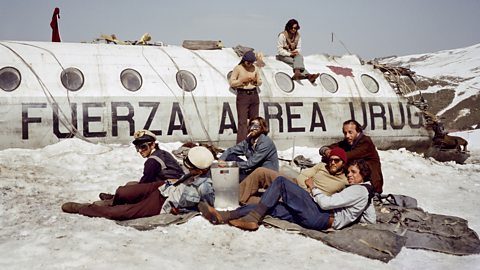 Netflix
NetflixHe argues that it's not the point of the film. "This is a horrible story that is never focused on the horror," he tells BBC Culture. "The way we approach the story is quite the opposite. It's focused on the human aspect of the story and on the friendship, on the extreme generosity they had to each other."
'So much more' to the story
The "generosity" he mentions includes a pact between many of the crash survivors offering their bodies as food for the others if they died. The plane had 45 passengers and crew when it crashed, carrying friends, family and players of the Old Christians Club rugby team who were travelling from Montevideo in Uruguay to a match in Chile. Thirty-three people survived the crash, but only 16 of them, all young men, were rescued.
"I did a lot of interviews with them, and at the time they were young kids studying at college, some were doing medicine or law, and some were religious, others were not," Bayona explains.
"We have this scene in the film which is this long conversation they have about using the bodies or not, and it is based upon the real conversations we had with them.
Uruguayan actor Enzo Vogrincic, who plays the narrator of the film, Numa Turcatti, hopes that viewers will see what he thinks as "so much more" to the story of survival than the cannibalistic element.
"People who don't really know the whole story will probably know this particular part of it," he tells BBC Culture. "I regard it as a success of Bayona's to put it in the background and keep it off screen as much as possible, because at the end of the day it was just a vehicle for them to survive. It's not the story itself. They did so much more."

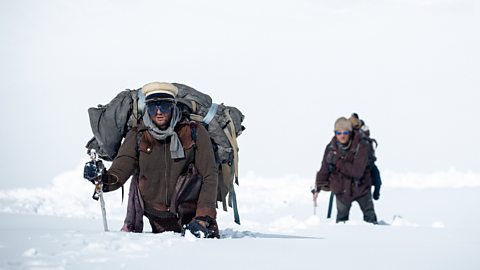 Netflix
NetflixVogrincic describes being "cold and hungry all day" himself during shooting, mainly in the Sierra Nevada mountains in Spain, as the actors wore clothes in the snow that reflected the 1970s and were also losing weight, under medical supervision, to recreate the characters' physiques after so many weeks in the wilderness.
"I don't think there would've been another way to film it to tell the story properly, because at the end of the day, it really helped us to give an even better performance," he adds.
"We also said, 'when the families see the film, when the survivors see the film, we want it to be real and we want to be true to them.'"
Terrible conditions
JA Bayona had a taste himself of just how terrible the conditions must have been in the Valley of Tears in the Andes, where the flight crashed, when he was able to visit it before filming.
"Although I didn't experience the cold as I had my sleeping bag in my tent, I was protected, when I woke up in the morning my bottle of water was a piece of ice," he says. "As I didn't have that third day to get used to the altitude, I had the worst night ever. My heart was beating super-fast all the time, I became confused and out of my mind. I totally lost all sense of time as well. And I thought, 'this is just one night for me, these people spent more than 70 nights here, they were wearing inadequate clothes, they were not ready.' So that puts you in the context of how big the situation was, how epic it was to survive 72 days in these conditions."
During that time, the 16 who were ultimately rescued also survived the plane being buried in an avalanche, until, knowing that no one was looking for any survivors, two of the group, Nando Parrado and Roberto Canessa, set out across the mountain range without proper hiking gear to try to get help. Around 10 days later, they would finally meet a group of Chilean famers, but Bayona points out Parrado and Canessa didn't expect to live through the experience.

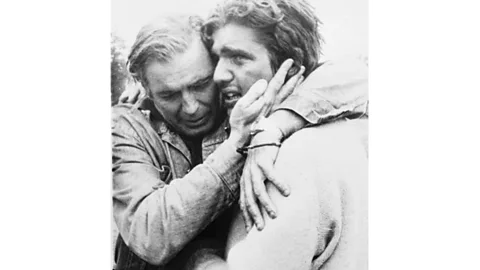 Getty Images
Getty Images"At a pivotal moment in this story, the characters set off blindly down the mountain, with no clear destination and to certain death. For me, it's an act of dignity," he says.
"Dignity was also expressed by those who died giving encouragement to their companions. These behaviours are the result of a profound transformation. In a situation of complete abandonment, when everything has been taken from you, you can choose how to die."
Society of the Snow has been nominated for a Golden Globe for best picture not in the English Language and is Spain's entry for the best international feature film Oscar.
Vogrincic stresses how important it is for them to have something that documents one of Uruguay's most famous stories made in their own language.
"I think the fact that it's told in Spanish changes everything because we who are from the area can really understand the story on a deeper level because the story is in us. We are born with the story. And when you're talking to the family members, there's no intermediary, there's a direct bridge. We're speaking the same language, so we could directly understand each other."
Society of the Snow is released in cinemas in Spain and the US on 15 December, in the UK on 22 December, and on Netflix on 4 January 2024.
If you liked this story, sign up for The Essential List newsletter – a handpicked selection of features, videos and can't-miss news delivered to your inbox every Friday.
"story" - Google News
December 14, 2023 at 06:00PM
https://ift.tt/ANhqXvr
Society of the Snow: The horrifying story of the 1972 Andes plane crash is also one of survival and generosity - BBC.com
"story" - Google News
https://ift.tt/70YhnSQ
https://ift.tt/tSrZ0oe
Bagikan Berita Ini














0 Response to "Society of the Snow: The horrifying story of the 1972 Andes plane crash is also one of survival and generosity - BBC.com"
Post a Comment